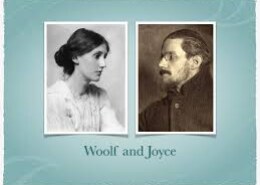James Joyce's "Ulysses" and Virginia Woolf's "Mrs Dalloway" exemplify modernist narrative techniques, each contributing uniquely to the portrayal of modernist themes like the complexity of consciousness and reality's fragmentation. Narrative Techniques in "Ulysses" Joyce's "Ulysses" is known for itsRead more
James Joyce’s “Ulysses” and Virginia Woolf’s “Mrs Dalloway” exemplify modernist narrative techniques, each contributing uniquely to the portrayal of modernist themes like the complexity of consciousness and reality’s fragmentation.
Narrative Techniques in “Ulysses”
Joyce’s “Ulysses” is known for its stream-of-consciousness technique, which delves into the characters’ minds and presenting a realistic portrayal of consciousness. Joyce’s interior monologue creates an intimate connection, while multiple narrative styles and parodies emphasize modern life’s fragmented nature, underscoring subjective reality.
Narrative Techniques in “Mrs Dalloway”
Woolf’s “Mrs Dalloway” also uses stream-of-consciousness but is more fluid and lyrical compared to Joyce’s dense style. Woolf blends characters’ thoughts with the narrative voice, creating a seamless flow between perspectives. This technique explores characters’ inner lives while maintaining coherence. Woolf’s focus on time and reflections highlights reality’s transient nature, a core modernist concern, and underscores the interconnectedness of individual experiences within the broader social fabric.
Contribution to Modernist Themes
Both authors’ techniques reflect modernist themes by breaking away from traditional forms and exploring consciousness and perception’s complexities. Joyce’s fragmented style in “Ulysses” emphasizes reality’s disjointed nature, while Woolf’s interconnected stream-of-consciousness in “Mrs Dalloway” highlights the flow of human experience in a fragmented world. Together, these techniques contribute to a deeper understanding of modernist explorations of inner life and reality.
See less

Marxist literary criticism interprets the relationship between literature and society through the lens of class struggle, economic disparity, and the socio-economic forces that shape both. In George Orwell's "1984," these themes are evident in the rigid class structure and the pervasive control exerRead more
Marxist literary criticism interprets the relationship between literature and society through the lens of class struggle, economic disparity, and the socio-economic forces that shape both. In George Orwell’s “1984,” these themes are evident in the rigid class structure and the pervasive control exerted by the Party. The society depicted is divided between the ruling Party and the oppressed proles. The Party, especially the Inner Party, represents the bourgeoisie, controlling resources, information, and power, while the proles are kept in ignorance and poverty, rendering them powerless. Economic disparity is a central theme, with the proles living in deprivation and the Inner Party enjoying luxuries, highlighting the unequal distribution of wealth and resources. This disparity underscores the Marxist critique of capitalism, where the ruling class thrives at the expense of the working masses. The Party’s manipulation of language and truth through doublethink and Newspeak, along with the use of surveillance and ideological control, reflects Marxist ideas about how ruling classes maintain dominance. Winston’s failed rebellion and the Party’s control over supposed revolutionary groups illustrate the difficulties of overthrowing entrenched power structures. Through a Marxist lens, “1984” critiques totalitarianism and explores power, control, and resistance within a stratified society.
See less